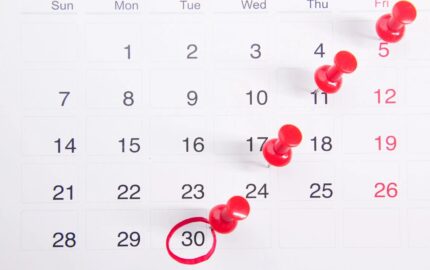Editor's note: This is a lightly edited transcript of Polish journalist and media entrepreneur Zuzanna Ziomecka’s keynote at the 8th edition of The Power of Storytelling conference, held last month in Bucharest, Romania. The conference theme was ‘Rewrite,' and focused on how good storytelling can change our understanding of the world.
Zuzanna Ziomecka is founder of NewsMavens, an online news magazine created by women throughout Europe. She spoke about how biases are reflected in the stories we tell and what opportunities arise when news organizations embrace diversity.

In 1956, a psychologist named George Miller published a study called The Magical Number 7, Plus or Minus Two: Some Limits on Our Capacity for Processing Information. He counted how many objects our working memory can hold at any given time. The answer was seven, plus or minus two, which means five to nine.
This seems probable, right? Most of us have memorized phone numbers – you remember when we used to do that? We were able to memorize nine-digit numbers. We were able to memorize addresses, names – probably seven plus or minus two of them.
But do you know how many bits of information are out there at every given moment? About 11 million. Every second, your body’s senses are processing information about the smells in this room, the textures of the clothes you’re wearing, the temperature, the sounds, the details of the lights, the temperature and movements of the person sitting next to you. Eleven million bits of information are being ingested by us, unconsciously, all the time. And only seven plus/minus two bits make it into the conscious mind. What that means is that there is an incredible amount of compression happening. Compression and selection.
Other studies show how much man-made information we are being subjected to, especially over the last 60 years. It turns out that despite our bodies’ limited capacity to ingest information, the amount that we are exposed to has grown. I have two examples. First: we are exposed to the sum of about 174 newspapers a day. Not the one you buy and read or skim through online, but 174 of them. The second example provides a historic view: In a single month, we now get exposed to the same amount of information our grandparents were exposed to in their entire lifetime.
And from all that we filter out our seven plus/minus two. Which means neurologists no longer believe that individual human beings have contact with objective reality. There's just too much of it, and everybody is picking out different bits. This is what our brain does for us. Thanks to this information-filtering process, we don't overheat and our heads don’t explode when we're trying to understand and go through the motions of our daily lives.
There are two ways that the brain does this amazing selection process. One is our attention. The things we pay attention to are the things we see; the things we don't pay attention to disappear. Take your nose for example: When you think about it you can kind of see it, right? But day by day, when you are not paying attention to it, you don’t see it. I don't register the sight of my glasses or the bit of hair or my nose because I’m not paying attention to them. The second way information is filtered is through automatic processes. These have a name that has very negative connotations these days. They're called biases, and they help our brain determine what information to select or ignore.
Cognitive psychologists have defined 183 biases that we all have that fall under these basic umbrellas: Decision-making and belief biases (the biggest group); social biases; and memory errors, which is the way we remember things. Let me talk you through a few:
- Knowledge bias happens when better informed people find it extremely difficult to understand people who are not as well informed.
- Normalcy bias is the refusal to plan for or even acknowledge that something bad is going to happen if it has never happened before.
- We also have an IKEA bias where you love their stuff because you put it together yourself. It's not just that their stuff is cheap and looks good; it's also because we worked on making it come together. That works with food as well. Things we've made ourselves are good, right? (I still can't understand why my kids won’t eat it…)
Aside from the 183 identified, defined, named biases, each one of us also has personal biases. These are the things that we get from our family. Most of us are conditioned by things that were hard, by things that went really well, by things that we saw over and over again. These could be traumas, successes, or everyday reality. Repetition makes reality, right? We tend to think that things that happen all the time are true and always will be true.
Imagine how this affects the news. We rely on newspapers to tell us what's happening in the world. Newspapers narrate current affairs. They tell the story of modern history to us. And yet, they also are subject to biases.
The things we pay attention to are the things we see; the things we don't pay attention to disappear.
One of them is negativity bias; it’s a really, really powerful way that our brain has of making us react more strongly to things that are negative than to things that are positive. This has been calculated: We react three times more strongly to something bad than to something good. Three times! (In a relationship, it is five times as bad. Like those socks on the floor – you need five positive things to balance out your opinion about your partner after finding them there.) Intuitively, newspapers editors recognize this and have a very visible tendency of putting bad news on the front page: If it bleeds, it leads.
There is another bias that I see in tabloids a lot. It is a memory bias which says that if things are bizarre or weird, we're more likely to remember them. Consider this tabloid headline: Best man left bleeding after being hit in the head by a flying dildo. Even mainstream newspapers and news portals find weird things to spread around the internet because we have an innate preference for reading weird things and we tend to remember them. We see our friends in the evening and we're like: “Did you hear about the flying dildo?” We remember that more often than the details of a war far away, or good news about the economy and unemployment.
Finally, there’s a third bias that particularly pisses me off about the news industry. It's called in-group bias. It's a social bias and is the tendency for people to give preferential treatment to others they perceive to be members of their own group. This doesn't just happen in news organizations, of course. It happens everywhere, where we are more likely to trust and think well of people who are like us. It is normal for our brain to do this. It was a useful evolutionary tool that helped us survive because it was easier to trust members of our own tribe and our own species. Now that we are no longer in caves and civilization has progressed, we still have a tendency to prefer people who are similar to us.
I know all this and thought I was immune until I was going through a hiring process for a project. I was looking through a big pile of resumes with my team and we were putting stars by the names of people we thought we’d like to meet in person. I found this CV from a woman, and I had a great feeling about her. I put a star and a little heart on her resume, passed it to my editor and said: “Take a look at this one. I think she's a winner.” My editor burst out laughing and said: “Zuza, she looks just like you.” And it was true. Same haircut, same glasses!
This happens to all of us. But we really have to watch for it. Because the consequences of having something as important as our news in the hands of one particular social group are very important.
According to a recent study, just 27 percent of newsroom leadership positions were held by women. I discovered this statistic thanks to the incredible work of the International Women in Media Foundation, which counted how many women were in charge of newspapers around the world.
There is an important distinction between being in charge and working on the staff. There are a lot of excellent women journalists; in fact, I would say that we are practically at parity with women and men journalists working in the field. However, the editor who controls the newsroom is an authoritarian figure. No matter how many excellent women you have on your team, it's this person, usually a guy, who decides which stories go on the front page, which stories we follow up, which are the most important stories of the day. This is not to say that the stories men find relevant and interesting are not so; I don't think that. But I think that because of the natural biases that we are all equipped with, men are conditioned to notice slightly different things than women are.
...the consequences of having something as important as our news in the hands of one particular social group are very important.
Even in 2018 we raise the girls differently. There is an amazing study about how moms talk to their kids when there is a child crying on the playground. A little boy asks: “Mom, why is that kid crying?” And he gets this short explanation, “Oh, he fell. Let's go.” But if it's a little girl who asks the question, her mother tells her much more and in much greater detail. The little girl gets a significantly longer and more involved explanation of the intricate complex social situation that has made another child cry. So what does that mean? It means that women are more often taught to notice social interactions. I'm sure in all of the many places that you come from this plays out a little differently. But in most places, boys and girls are taught to notice different things. Then we continue to look for those things in the future and they automatically become the things we notice, at the cost of all the other millions of things. All the rest of the things, like our noses, disappear.
There are two ways that you can work with bias. One is bias training. Facebook does this, for example, and you can do it too, because they've made their bias training available for free online. They go through the various biases we have when we hire people or when we assess performance. Their thinking is that if you learn to recognize the different kinds of biases and check yourself all the time, you will rely on your biases less. Good in theory but very difficult in practice, because there are so many biases at work all the time.
Another technique that works is mindfulness, which is the art of decreasing your automatic responses and increasing your consciously made choices. Instead of formulating quick opinions, you think about things a little more slowly, miss less, and notice more.
But can these things really help a whole news industry? Although I was upset to learn about the low representation of women leaders in the news, it didn't seem very viable that I could call all the newsrooms in the world and say: “Hey, you have a problem! Let me come and teach you how to fix it.” Instead, with the financial support of Gazeta Wyborcza and Google Digital News Initiative Fund, I created NewsMavens. We put together a newsroom which is now 30 women. There are three in Warsaw, the core, and women from every European region. Their task is to select the stories they would have put on the front page of their regional newspaper if they were in charge. They are not writing new stories; they are curating. We are trying to create an alternative front page for Europe to show what women think is most important. We set out to answer the question: “What happens when only women choose the news?” After a year, we are ready to share our findings. Among them:
Cinzia from Italy: NewsMavens’ story selection is different because the articles are not commissioned by the editor–in-chief; what is published mirrors the journalist’s personal and professional interests. (Which begs the question: What do I do all day? I don't select the stories; I edit them. I consider it my task to keep the team happy, keep the project growing and make sure that is sustainable. But what Cinzia says is that choosing what you write about on your own makes a marked difference.)
Lidia, who covers the Balkans, told this story: A Bosnian female journalist went public with sexual comments she received from a male writer and a businessman. It was thought to be the beginning of Bosnian #metoo, but most media ignored it. NewsMavens highlighted her story and others about women in the Balkans who were under attack. This may seem obvious but needs to be spelled out: women pay attention to women and other marginalized groups. We saw this in the case of a story from the Netherlands where 15.000 women had been forced into unpaid labor in the 1970s by a Catholic organization. They were not given health care and were told not to say anything to anyone. When they started coming forward, the church said: “We’re not going to compensate you, but we can say we're sorry.” There was also the case of an Austrian MP who got sued after going public about the sexual harassment she was experiencing. The man who was harassing her was more powerful; he sued her, and he won. These are stories of how the system is failing women in Europe.
Claudia, who covers central and eastern Europe, says NewsMavens gives her the sense that if the world were run by women, things would be all right: “NewsMavens has such a huge focus on issues around social care, social justice, racism and inequality, unlike anything I've seen in any national or international media. The big boys of journalism don't always have the attention span for that.”
I think there's a lot of truth to this observation. There's a tendency for mainstream media to value the top of the power structure. These are the politicians, the big businesses and the big boys who are making decisions about the present and future of our world. Most editors have a really keen focus on figuring it out what those guys are doing. And rightly so – they have the biggest impact on our world. However, what women have showed via NewsMavens is that as a collective we have a consistent tendency to focus on what happens lower down the pyramid as a result of the decisions made on top.
The conclusion of this, as I see it, is that men pay attention to cause, women have a greater tendency to pay attention to effect. If we want to tell stories in our newspapers fully, we need to pay attention to both. This is a very strong argument for diversity in the newsroom.
... men pay attention to cause, women have a greater tendency to pay attention to effect.
Diversity is not only about elevating women, whether in the newsrooms or anywhere else. Seen from the perspective of bias, diversity is not a moral decision. It's not just based on liberal values – that we think there should be more diversity at the top of the power structures in newspapers and in society. It's not about things being fair.
It's about being able to see more of the truth.
The more people, with different kinds of brains, coming from different backgrounds that have shaped their perceptions differently, the greater your chance of seeing the big picture clearly.
And finally, I see diversity as an amazing opportunity for journalists to stop being the-know-it-alls telling everybody what to think, and to start being the curious explorers discovering the truth for and with their readers.


